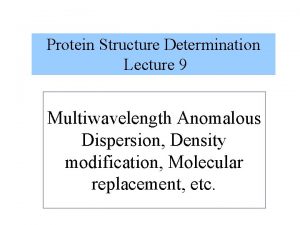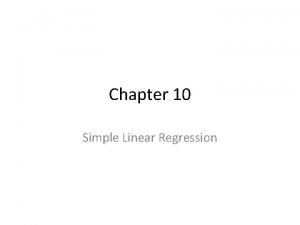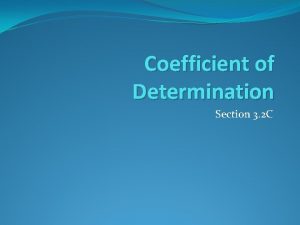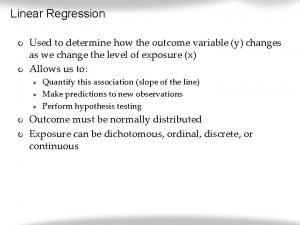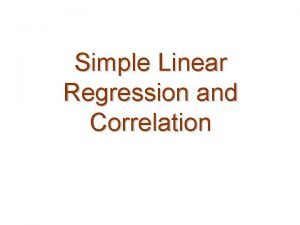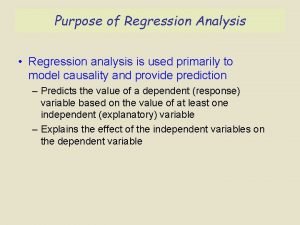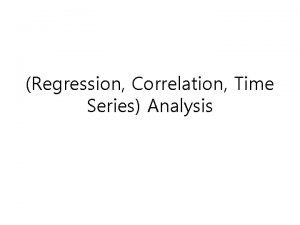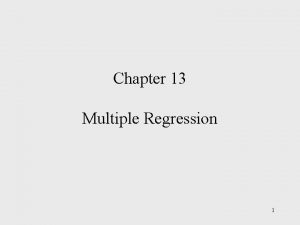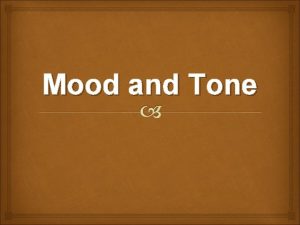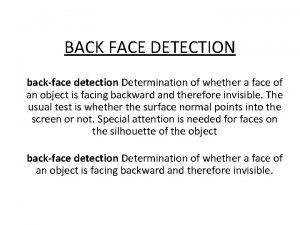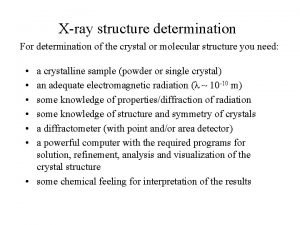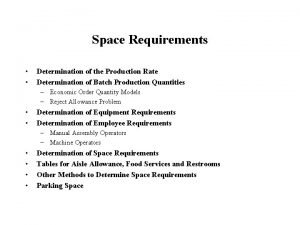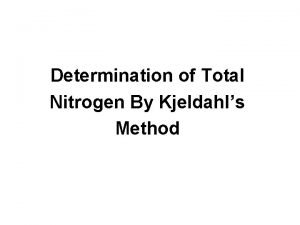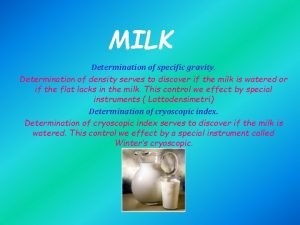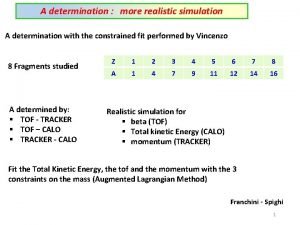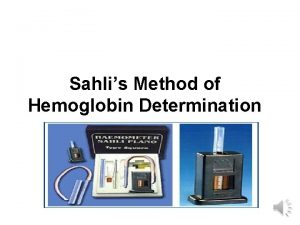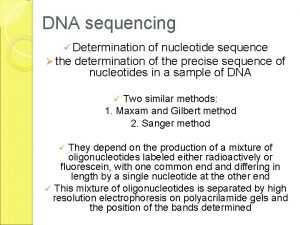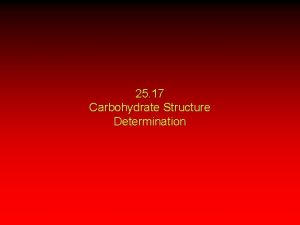MEASUREMENT MEASUREMENT Measurement is the determination of the



























- Slides: 27

MEASUREMENT

MEASUREMENT ØMeasurement is the determination of the dimensions, quantity or capacity of an item. ØTo measure physical quantities such as mass, time, length etc we use UNITS. ØA unit is a fixed quantity used as a standard for measurement.

Fundamental Quantities Derived Quantities ØThe physical quantities which do not depend upon other quantities are called fundamental quantities. ØFundamental quantities are mass, length, time, temperature, luminous intensity, current and amount of substance ØUnits of physical quantities which may be derived from fundamental units are called derived units. ØUnit of area( area = length × breadth) Unit of Velocity(displacement/tim e)

Systems of Units : �There are following principle system of units: �C. G. S System : length ? centimeter (cm), mass ? gram (g) time ? second (s). � F. P. S System : length ? foot (ft), mass ? pound (lb), time ? second (s). � M. K. S. System: length ? meter (m), mass ? kilogram (kg), time ? second (s)

SI UNITS…

MASS �Mass of a body is defined as the quantity of matter in the body. �We express mass of an object in gram (g) kilogram (kg) , tonne , quintal etc �The SI unit of mass is kilogram. � Mass of an object does not change from place to place.

UNITS OF MASS Some of the commonly used units of mass and conversions are : Ø 1 tonne = 10 quintal Ø 1 quintal = 100 kg Ø 1 kg = 1000 g Ø 1 g = 1000 mg

Measurement of mass

Beam balance A beam balance consists of a horizontal beam , supported at its centre. § Two pans of equal masses are suspended from both the ends of the beam. § The object is kept on one pan and the standard masses on the other. § When both the pans are equally loaded , the beam is horizontal and the pointer points vertically up at the center. §

Physical balance

Physical balance �Physical balances are utilized for precision mass measurement. �A physical balance can measure accurately upto a milligram. �It is provided with a box of standard masses ranging from 1 mg to 100 g. �It works on the same principle as that of a beam balance.

WEIGHT �Weight is the force exerted on a body by gravity. �This is often expressed in the formula W = mg, where W is the weight, m the mass of the object, and g gravitational acceleration �The SI unit of weight is Newton(N)

Measurement of weight Spring balance

Measurement of weight �A spring balance is used to measure weight of a body �It consists of a spring fixed with a pointer at the upper part and a hook at the lower end to suspend the body �The extension produced in a spring is directly proportional to the gravitational force acting on it.

Comparison between mass and weight MASS ØAmount of matter present in the body ØSI unit is kg ØMeasured using a beam balance ØDoes not vary with place WEIGHT ØGravitational force on a body ØSI unit is Newton (N) ØMeasured using a spring balance ØWeight varies with place

DENSITY �The density of a material is its mass per unit volume. �The symbol most often used for density is ρ (the lower case Greek letter rho). �ρ =m/V �where ρ is the density, m is the mass, and V is the volume. �The SI unit of density is kg/m 3

Density of different substances

Question? ? ? Equal masses of iron and common salt have different volumes.

Determining the density of a irregular solid �For an irregular solid like a stone, volume can be found using a graduated measuring cylinder. �The measuring cylinder is half filled with water and the initial water level is noted �Then the stone is immersed in water with the help of a thread and the reading of the water level is noted � The mass of the stone is determined using a physical balance

Thus the density of the stone is found using formula D=M/(Final volume-Initial volume)

RELATIVE DENSITY �Relative density, or specific gravity, is the ratio of the density (mass of a unit volume) of a substance to the density of a given reference material. �It tells us how dense or heavy is the density of a substance with respect to water �Relative density has no units

Measurement of relative density of a liquid �The relative density of a liquid can be determined with the help of a relative density bottle

Relative density bottle �It is a small, thin walled glass bottle with a stopper having a fine hole. �The mass( m 1 ) of the empty bottle is determined using a physical balance. �The liquid whose density is to be measured is filled into the bottle and its mass( m 2 ) is determined. �Now clean the bottle thoroughly and find the mass of bottle when it is filled with water(m 2 )

Calculating RD �RD=Density of liquid Density of water =Mass of liquid/Volume of liquid Mass of water/Volume of water = (m 2 – m 1 ) / (m 3 – m 1 )

Practical application of relative density �Looking at the RD of different substances we can find whether an object or a liquid sinks or floats in water. �If a substance‘s RD is less than one it floats in water. �If a substance‘s RD is more than one it sinks in water.

HYDROMETER �Hydrometer is a device designed to float on a liquid �There are special hydrometers for liquids lighter and denser than water, for testing the purity of milk, for testing the concentration of acids in batteries.

Reference �http: //www. convertunits. com/ �http: //www. easyunitconverter. com/ (conversion) �http: //www. aasd. k 12. wi. us/staff/boldtk atherine/Math. Resources 36/Math_Measurement. htm#LENGTH (interactive) �http: //www. syvum. com/cgi/online/serv e. cgi/squizzes/physics/measure 1. tdf? 0 (quiz)
 Air self-determination scale
Air self-determination scale Exchange rate determination and forecasting
Exchange rate determination and forecasting Sex determination and sex linkage
Sex determination and sex linkage Anomalous
Anomalous Calculation of coefficient of determination
Calculation of coefficient of determination Route determination in osi model
Route determination in osi model Transport number
Transport number Shipping point determination
Shipping point determination Calculate the coefficient of determination
Calculate the coefficient of determination Poe
Poe Pig penis
Pig penis Coefficient of determination interpretation example
Coefficient of determination interpretation example Gravimetric principle
Gravimetric principle Linear regression riddle a answer key
Linear regression riddle a answer key Xxyy chromosomes
Xxyy chromosomes Purpose of regression
Purpose of regression Price determination under perfect competition
Price determination under perfect competition The investment of an employee's physical cognitive
The investment of an employee's physical cognitive Manifestation determination flowchart
Manifestation determination flowchart Contents of cold drinks
Contents of cold drinks Coefficient of determination in r
Coefficient of determination in r Adjusted multiple coefficient of determination
Adjusted multiple coefficient of determination He approached the task with sheer determination
He approached the task with sheer determination Sex determination and sex linkage
Sex determination and sex linkage Curie point experiment
Curie point experiment Back-face
Back-face Determination of heat of neutralization
Determination of heat of neutralization Differentiation vs determination
Differentiation vs determination



